Municipal authorities and water suppliers treat tap water before distributing it to citizens’ households. But that’s not the case with private wells — their safety and cleanliness are the responsibility of the well owner.
As a result, well water is more likely to be contaminated, which could give the water a cloudy appearance. This contamination may be caused by harmless sediment particles, or it could be due to a dangerous gas like methane leaching into the well.
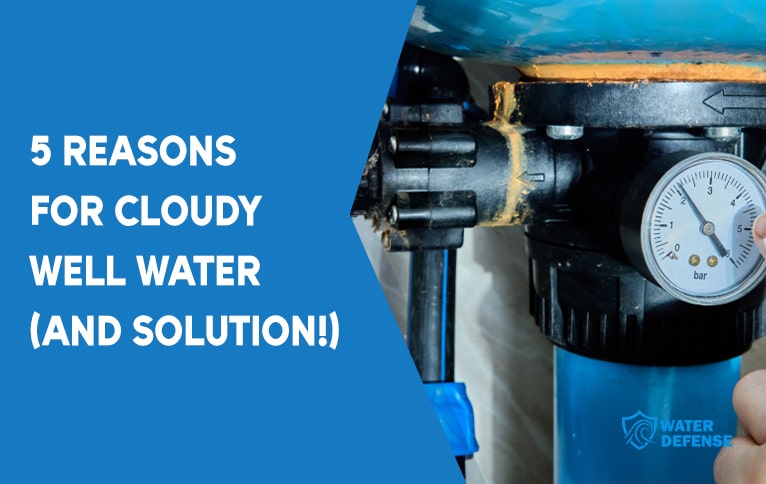
In this article, we’ll help you identify all the potential reasons behind cloudy well water and offer solutions for each. Let’s start with what you should do if your water suddenly turns cloudy.
What Should You Do if Your Well Water Turns Cloudy?
Cloudy well water doesn’t always spell danger, but there’s a slight chance that your well is contaminated by methane gas. So, if your well water turns cloudy, it’s best to stop using it, immediately collect a water sample, and send it to a water testing lab certified by the Environmental Protection Agency (EPA).
However, we should warn you that sometimes these tests take some time. If you don’t want to wait too much, you can go with a test kit — see our recommendations for the best water testing kits.
Still, you’ll get the most accurate results with a test from a lab, plus you’ll get a detailed analysis of your water. Then you can implement the appropriate solution, like installing a well water filter.
The Main Causes Behind Cloudy Well Water
Air Bubbles
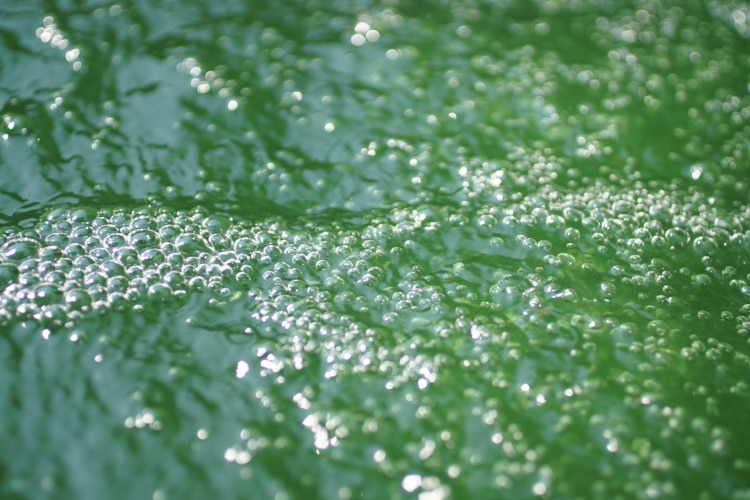
Your water will look cloudy if there are air bubbles inside your piping system.
The presence of air bubbles inside water may indicate either of the following:
- There’s little water left inside your well, so your well pump is pumping a mixture of air and water to your house’s piping system.
- There’s still air in the pipes if you have just installed a well water filtration system.
When there’s little water left inside your well, you need to start using water economically and wait for the well to replenish completely.
In addition, you can clear the air inside the piping system. To do that, turn off the main incoming valve to your house and turn on all the faucets until there is no water inside the system. Then, turn it on again.
If the problem is due to a newly-installed water filtration system, you don’t need to do anything. Once the system adjusts to the water quality, it should cease producing air bubbles. However, if it continues to produce air bubbles after a couple of days, you can call the system’s manufacturer and follow their recommendation.
Dissolved Gas
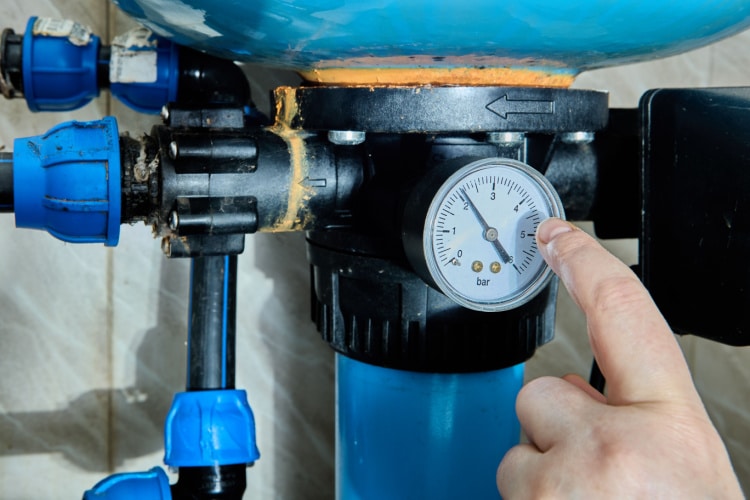
If a gas contaminates your well or the water supply and dissolves into the water, it’ll cloud your water. In such cases, you should definitely have your water tested.
The most common type of gas found in well water is methane. Although this gas doesn’t pose any health risks in small amounts, it can cause explosions once it’s above 28 mg/L.
So, you should immediately eliminate the gas from your pipes to ensure your and your family’s well-being. To do that, the best course of action is to aerate your water, following the instructions by the Minnesota Department of Health. Keep in mind that even the most effective water filtration systems won’t remove it.
You can use a galvanized well water pressure tank to aerate your water. These tanks feature an air-release valve that vents the gasses inside your water to the atmosphere.
You can also install an aspirating or aerating device to the inlet of your water storage tank.
Sediment
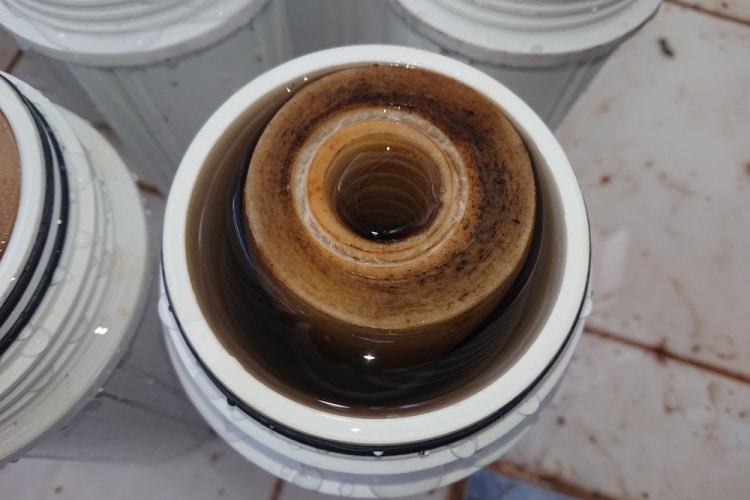
Most well systems feature a sediment filter to prevent sediment entry to the well, water storage tank, or well pump. However, these built-in filters wear down quickly and aren’t super efficient.
As a result, you get sediment build-up in your water supply. When the sediment levels are too high, the water will become cloudy due to increased turbidity.
You can identify sediment in your water by filling a glass and letting it rest for a few minutes. After a while, the sediment will start accumulating at the bottom of the glass.
By itself, sediment doesn’t pose health risks, but if sediment residue ends up at your faucets, coliform bacteria can, too.
The best way to deal with sediment and coliform bacteria is to install a suitable filtration device. Check out our recommendations for the best sediment filters and the best ultraviolet purification systems for killing bacteria.
Surface Water
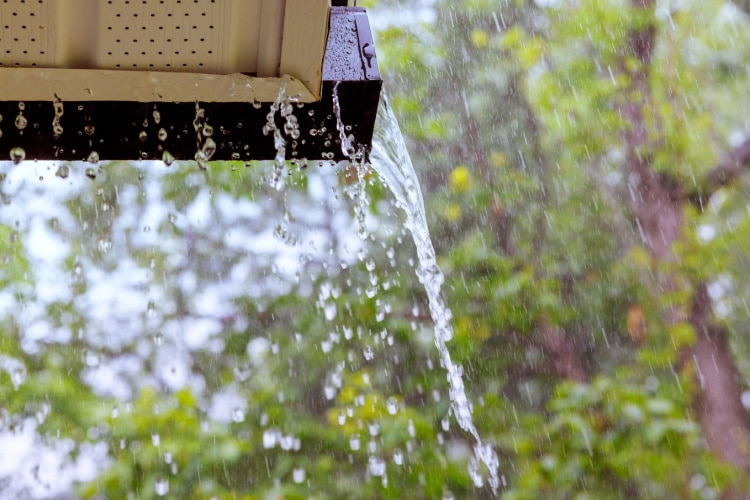
After heavy rainfall or flood, surface water can sneak into your well and cloud your water. Additionally, surface water can contaminate your well if there’s a crack in your well casing or well cap, .
In such cases, it’s best to get a contractor to identify how the surface water entered your water supply and take action based on their advice.
High Iron and Manganese Levels

Iron and manganese are harmless minerals that are naturally present in soil and water. However, if there are mining operations near the aquifer from where you’re drawing water, an excessive amount of these minerals could leach into your water.
Not only will these minerals give your water a cloudy appearance, but they’ll also build up in your pipes and appliances, leading to deterioration. So, although they don’t pose any health risks, it’s best to prevent them from entering your household’s piping system.
Fortunately, we have just the guide you need if you’re looking for good iron filters.
Conclusion
Well water can often look cloudy because of air bubbles produced by your well pump or a newly-installed water filtration system. If it’s your well pump, you need to decrease your water consumption until your well is full of water again. If it’s the water filtration system, just wait for it to adjust to your water.
Dissolved gas, most commonly methane, can also make your water cloudy. In such cases aerating the water will help.
If your cloudy water problem is due to excessive amounts of sediment, iron, or manganese, installing the appropriate filtration unit will solve the issue.
Lastly, if surface water enters your well, get a professional contractor to check your well for damage. You can take action based on the contractor’s advice.